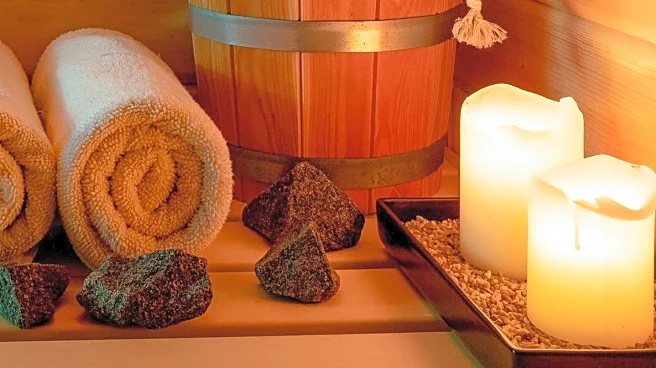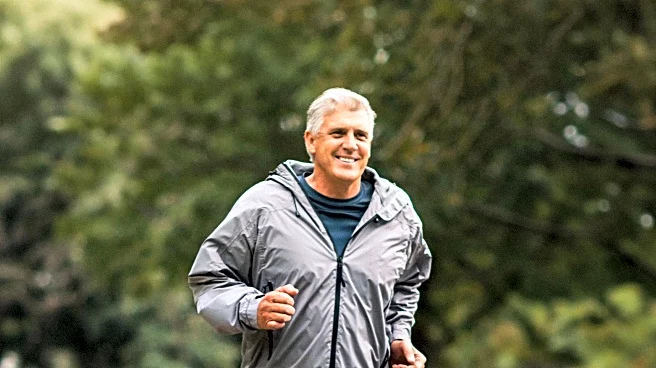What's Happening?
Japanese walking, a fitness regimen developed over 20 years ago, is gaining popularity as an accessible form of exercise. This 30-minute workout involves alternating between normal-paced walking and bursts
of speed, making it suitable for middle-aged and older adults. The regimen was initially designed to improve physical fitness and prevent lifestyle-related diseases such as diabetes and obesity. Recent studies have shown that high-intensity interval walking can protect older adults from high blood pressure and improve muscle strength and cardiovascular fitness. The exercise is appealing because it does not require a gym membership or special equipment, and can be performed outdoors, which enhances mental health by reducing anxiety and connecting individuals with nature.
Why It's Important?
The resurgence of Japanese walking highlights the growing interest in accessible fitness solutions that cater to older adults. As the U.S. population ages, there is an increasing need for exercise programs that are not intimidating and can be easily integrated into daily routines. This form of interval training offers significant health benefits, including improved cardiovascular health and muscle strength, which are crucial for maintaining independence and quality of life in older age. The popularity of Japanese walking also underscores the importance of outdoor activities in promoting mental well-being, as engaging with nature has been shown to reduce anxiety and improve mood.
What's Next?
As Japanese walking continues to gain traction, it may inspire further research into its long-term health benefits and potential adaptations for different age groups. Health professionals might advocate for its inclusion in public health campaigns aimed at encouraging physical activity among older adults. Additionally, fitness communities and organizations could develop structured programs or events centered around Japanese walking to foster social engagement and community support. The trend may also lead to increased interest in other forms of interval training, prompting innovations in exercise regimens tailored to diverse populations.
Beyond the Headlines
The rise of Japanese walking reflects broader societal shifts towards prioritizing health and wellness, particularly among older adults. It highlights the cultural importance of integrating physical activity into daily life and the role of simple, accessible exercises in combating lifestyle-related diseases. This trend may influence public health policies and encourage urban planning that supports safe and accessible outdoor spaces for exercise. Furthermore, it could spark discussions on the ethical considerations of promoting fitness regimens that are inclusive and adaptable to various physical abilities.











